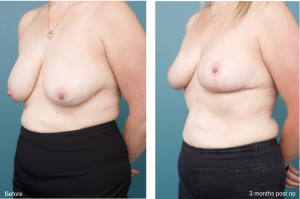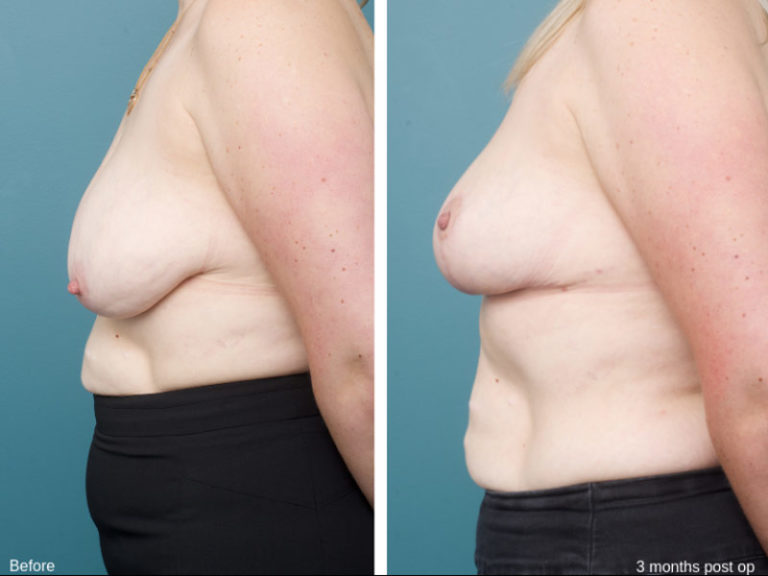A breast reduction (or reduction mammoplasty) aims to reduce the size of the patient’s breasts, achieving a smaller cup size.
Excessively large breasts may cause physical and emotional problems, enough so to have an impact on everyday life.
How do we determine if you’re a good candidate for breast reduction surgery?
At Ethicos Institute, we will perform a thorough evaluation of your breasts during an in-depth consultation, to determine your candidacy.
A breast reduction involves removing glandular tissue, excess fat and skin to help the breasts align with the rest of your body shape.
Breasts of a better proportion can cause less physical and emotional strain.
Breast reduction is almost always performed under a general anaesthetic. Inform Dr. Gillett if you have a history of allergic reactions to anaesthesia.
As with any form of cosmetic surgery, a breast reduction poses multiple potential risks, including:
All possible risks will be addressed during your consultation with Dr Gillett.




You will have a chance to discuss your breast reduction surgery during your consultation with Dr. Gillett. The Ethicos Institute team is committed to transparent service tailored to your personal requirements. We treat each case as unique.
You will awaken after the operation with dressings and a small drainage tube will be in each breast. These drainage tubes will usually be removed the next day, and the dressing will be checked. You should get to go home 3 days after the operation.
You must not get the dressings wet for 24 hours after the drains are removed. You may then shower; pat the dressings dry / use a hairdryer on cool setting.
Quite often, discomfort is felt with movement and your anaesthetist will provide you with instructions regarding pain medication. You may receive a prescription, if necessary.
First Post Operative Appointment
We will see you in the rooms 4 – 7 days post op. Do not be concerned about slight ooze under the dressings, this is quite common. The dressings will be changed at your first post-operative appointment in the rooms approximately 1 week after your surgery.
Second Post Operative Appointment
Your next post-operative visit will then be scheduled for removal of remaining suture/staples. Nipple sensation is often different; numbness is common but sensation usually returns within six to twelve weeks.
We recommend you slowly recommence normal exercise after the surgery. We suggest however, no heavy lifting or strenuous exercising for 6 weeks after the surgery. Most people can resume driving approximately 1 week after surgery. You will need to take approximately 1-3 weeks off work, depending on how physical your daily activities at work are.
To find out more information about our treatments or to book in for a consultation with Dr Gillett call 08 9284 4966 or contact us by clicking here